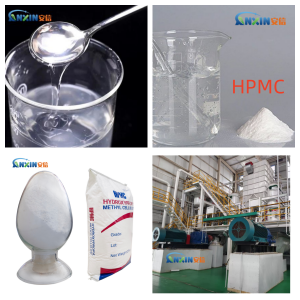Hydroxypropyl Methylcellulose (HPMC) is a commonly used non-ionic cellulose ether, widely used in building materials, pharmaceuticals, food, coatings, and other fields. Its performance stability and quality directly affect the final product’s effect; therefore, systematic testing of HPMC during production and application is of great significance.
1. Appearance and Basic Property Testing
Before testing, the sample is first observed visually. High-quality HPMC should be a white or off-white powder with good flowability, free from lumps, odors, or impurities. Its aqueous solution should be transparent or slightly turbid, without obvious suspended matter. Subsequently, its moisture content is determined, commonly using an infrared moisture analyzer or the drying method (105℃ constant weight method). Qualified products generally have a moisture content below 5%.
Ash content determination reflects its inorganic impurity content. The sample is ignited in a muffle furnace at 550℃ to constant weight. The ash content is typically required to not exceed 1.5%. Excessive ash content will affect the solution’s transparency and viscosity stability.
2. Viscosity Testing
Viscosity is one of the most critical performance indicators of HPMC, directly determining its thickening, water retention, and film-forming effects. Testing is generally performed using a rotational viscometer (such as a Brookfield viscometer) or an Ubbelohde capillary viscometer.
During testing, a certain concentration (usually 2%) of HPMC aqueous solution is tested at a specified temperature (generally 20 ± 0.1℃). Different types of HPMC have significantly different viscosity ranges, such as 400, 15000, and 100000 mPa·s. The measured viscosity should conform to the product standard range; otherwise, it indicates that its degree of polymerization or substitution is unstable.
3. Degree of Substitution Testing (Methoxy and Hydroxypropoxy Content)
The performance of HPMC is largely determined by the content of substituents.
The methoxy (–OCH₃) content affects solubility, gel temperature, and surface activity;
The hydroxypropoxy (–OCH₂CHOHCH₃) content affects flexibility and water retention.
Determination methods commonly employ chemical titration or gas chromatography. For example, after acid hydrolysis, the sample yields the corresponding alcohols, which are then quantitatively analyzed by titration or chromatography. Qualified HPMC products typically contain 19%–24% methoxyl content and 4%–12% hydroxypropoxyl content.
4. Gel Temperature Measurement
The thermogelation characteristics of HPMC are a key parameter distinguishing it from other cellulose ethers. During testing, the HPMC aqueous solution is slowly heated and stirred, and the temperature at which the solution changes from clear to turbid is recorded as its gel temperature.
Generally, HPMC with higher methoxyl content has a lower gel temperature, while a higher hydroxypropoxyl content results in a higher gel temperature. This indicator relates to the product’s stability in applications such as building mortar and tablet coating.
5. pH Value and Solubility Testing
After preparing a 2% HPMC solution, its pH is measured using a pH meter. The normal range is 5.0–8.0. Within this range, HPMC is stable and will not react adversely with most inorganic materials or additives.
The solubility test assesses its dispersion and dissolution rate in cold water. High-quality HPMC should disperse rapidly under stirring, forming a homogeneous and transparent solution within 30 minutes.
6. Purity and Impurity Detection
Purity detection mainly includes tests for heavy metals, chlorides, sulfates, and microbial limits.
Heavy metal content (as Pb) should generally not exceed 20 ppm; chloride ≤ 0.2%, sulfate ≤ 0.5%;
For pharmaceutical or food applications, total bacterial count, coliform bacteria, and mold/yeast counts must also be tested to ensure safety.
7. Thermogravimetric Analysis and Fourier Transform Infrared Spectroscopy
To further evaluate the structure and thermal stability of HPMC, thermogravimetric analysis (TGA) and Fourier transform infrared spectroscopy (FTIR) can be used.
TGA can detect the mass change of HPMC at different temperatures, thereby determining its thermal decomposition temperature and stability range;
FTIR analyzes the functional group structure through absorption peaks, verifying the presence of characteristic –OH, –OCH₃, and –OCH₂CHOHCH₃ absorption bands to confirm the correctness of the molecular structure.
The above-mentioned systematic testing allows for a comprehensive evaluation of the physicochemical properties and application suitability of HPMC. Viscosity, degree of substitution, and moisture content are core quality control indicators; while pH, ash content, and gelation temperature reflect its processing and purity levels. Strict adherence to these testing procedures not only ensures product stability and performance consistency but also provides reliable data support for the safe and efficient application of HPMC in industries such as construction, pharmaceuticals, and food.
Post time: Oct-31-2025

